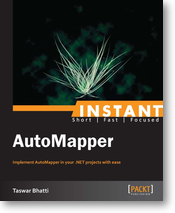In November I did a presentation at the Update Conference 2018 on Managing your secrets in a cloud environment using Azure Key Vault and Hashicorp Vault. Comparing both products and demo on using Key Vault to store your keys and secrets. It was excellent at Prague and once again thanks Update Conference inviting me to speak there.
Transcript
1. Managing your Secrets in a Cloud Environment Taswar Bhatti System/Solutions Architect at Gemalto (Canada) Microsoft MVP
2. Is your personal data important?
3. Who am I • Taswar Bhatti – Microsoft MVP since 2014 • Global Solutions Architect/System Architect at Gemalto • In Software Industry since 2000 • I know Kung Fu (Languages)
4. Good old days robbery
5. Today’s Robbery
6. Data breach……
7. Consequences
8. System with no Trust
9. Salesman
10. Data breach??
11. Delivery
12. Agenda • Intro • What are we trying to solve with KeyVault? • What is Azure Key Vault • Using Azure Key Vault with your application • Managed Service Identity • Demo • HashiCorp Vault • Best practices • Questions
13. So what are secrets? • Secrets grants you AuthN or AuthZ to a system • Examples • Username & Passwords • Database credentials • API Token • TLS Certs
14. Typical Application
15. Storing Configuration in file
16. Multiple application
17. Secret Sprawl • Secrets ends up in • Source Code • Version Control Systems (Github, Gitlab, Bitbucket etc) • Configuration Management (Chef, Puppet, Ansible etc)
18. Problems • Configuration becomes part of deployment • Multiple applications share the same configuration • Hard to have access control over the configuration
19. Issues • How do we know who has access to those secrets • When was the last time they accessed it? • What if we want to change/rotate the secrets
20. Desire secrets • Encryption in rest and transit • Only decrypted in memory • Access control • Rotation & Revocation
21. What is Azure Key Vault? • Secrets Management – Azure Key Vault can be used to Securely store and tightly control access to tokens, passwords, certificates, API keys, and other secrets. • Key Management – Azure Key Vault can also be used as a Key Management solution. Azure Key Vault makes it easy to create and control the encryption keys used to encrypt your data. • Certificate Management – Azure Key Vault is also a service that lets you easily provision, manage, and deploy public and private Secure Sockets Layer/Transport Layer Security (SSL/TLS) certificates for use with Azure and your internal connected resources. • Store secrets backed by Hardware Security Modules – The secrets and keys can be protected either by software or FIPS 140-2 Level 2 validates HSMs.
22. Gemalto Luna HSM (New)
23. PKCS11 Interop • Managed .NET wrapper for unmanaged PKCS#11 libraries • https://pkcs11interop.net/
24. Typical Application • In web.config
25. With Key Vault
26. Azure Key Vault • Register your app with Active Directory • Associated credential, and using that credential to get a token • Retrieve your secrets from Key Vault • PROBLEM SOLVED
27. Adding it back to web.config •
28. Code that looks like this ClientCredential clientCred = new ClientCredential( WebConfigurationManager.AppSettings[“ClientId”], WebConfigurationManager.AppSettings[“ClientSecret”]);
29. But???? • Confused?? • Isn’t that still in web.config?
30. Security doesn’t have to be like this
31. Managed Service Identity (MSI) • MSI gives your code an automatically managed identity for authenticating to Azure services, so that you can keep credentials out of your code • You create an identity for your application in Azure Active Directory using Managed Service Identity
32. Benefits • No need to authenticate to Azure Key Vault to get secrets • No client id and client secret is needed in the code • Easier to configure comparing to Azure Key Vault • You can authenticate to any service that supports Azure AD authentication
33. Demo
34. HSBC Hong Kong PayMe Hack
35. HashiCorp Vault • Centralized Secret Management • Encrypted at rest and transit • Lease and Renewal • ACL • Audit Trail • Multiple Client Auth Method (Ldap,Github, approle) • Dynamic Secrets • Encryption as a Service
36. Secure Secrets • AES 256 with GCM encryption • TLS 1.2 for clients • No HSM is required • One could also integrate with Azure Key Vault
37. Unsealing the Vault • Vault requires encryption keys to encrypt data • Shamir Secret Key Sharing • Master key is split into multiple keys
38. Shamir Secret Sharing
39. Unseal • Unseal Key 1: QZdnKsOyGXaWoB2viLBBWLlIpU+tQrQy49D+Mq24/V0B • Unseal Key 2: 1pxViFucRZDJ+kpXAeefepdmLwU6QpsFZwseOIPqaPAC • Unseal Key 3: bw+yIvxrXR5k8VoLqS5NGW4bjuZym2usm/PvCAaMh8UD • Unseal Key 4: o40xl6lcQo8+DgTQ0QJxkw0BgS5n6XHNtWOgBbt7LKYE • Unseal Key 5: Gh7WPQ6rWgGTBRSMecuj8PR8IM0vMIFkSZtRNT4dw5MF • Initial Root Token: 5b781ff4-eee8-d6a1-ea42-88428a7e8815 • Vault initialized with 5 keys and a key threshold of 3. Please • securely distribute the above keys. When the Vault is re-sealed, • restarted, or stopped, you must provide at least 3 of these keys • to unseal it again. • Vault does not store the master key. Without at least 3 keys, • your Vault will remain permanently sealed.
40. How to unseal • vault unseal -address=${VAULT_ADDR} QZdnKsOyGXaWoB2viLBBWLlIpU+tQrQy49D+Mq24/V0B • vault unseal -address=${VAULT_ADDR} bw+yIvxrXR5k8VoLqS5NGW4bjuZym2usm/PvCAaMh8UD • vault unseal -address=${VAULT_ADDR} Gh7WPQ6rWgGTBRSMecuj8PR8IM0vMIFkSZtRNT4dw5MF
41. Writing Secrets • vault write -address=${VAULT_ADDR} secret/hello value=world • vault read -address=${VAULT_ADDR} secret/hello • Key Value • — —– • refresh_interval 768h0m0s • Value world
42. Policy on secrets • We can assign application roles to the policy path “secret/web/*” { policy = “read” } • vault policy write -address=${VAULT_ADDR} web-policy ${DIR}/web-policy.hcl
43. Reading secrets based on policy • vault read -address=${VAULT_ADDR} secret/web/web-apps • vault read -address=${VAULT_ADDR} secret/hello • Error reading secret/hello: Error making API request. • URL: GET http://127.0.0.1:8200/v1/secret/hello • Code: 403. Errors: • * permission denied
44. Docker and Secrets • Docker does not have good integration with secrets • If you use env variables, it will show in docker inspect
45. Mount Temp File System into App • docker run –v /hostsecerts:/secerts …. • To mitigate reading from Env • Store your wrap token in the filesystem to use with vault • Have limit time on wrap token
46. Wrap Token for App Secrets • Limit time token • Used to unwrap some secrets • vault read -wrap-ttl=60s -address=http://127.0.0.1:8200 secret/weatherapp/config • Key Value • — —– • wrapping_token: 35093b2a-60d4-224d-5f16-b802c82de1e7 • wrapping_token_ttl: 1m0s • wrapping_token_creation_time: 2017-09-06 09:29:03.4892595 +0000 UTC • wrapping_token_creation_path: secret/weatherapp/config
47. Kubernetes with Vault • Read Service Account JWT • App Sends Jwt and Role Name to Vault • Vault checks the signature of Jwt • Sends to TokenReviewer API • Vault sends back valid token for app
48. Token Reviewer in K8s
49. Best Practices or Patterns • Cache Aside Encryption Key • Tag version of encryption
50. Cache Aside Encryption Key • Use Key Vault to Encrypt your Generated AES Key • For all encryption of your data you can use the AES Key rather than going back and Key Vault to encrypt • Allows you to penny pinch KeyVault
51. Tag Version of Encryption Level • Each Row of your database is tagged with the encryption version • This allows you when you rotate keys or change encryption level for example moving to a new Encryption Key to eventual encryption of data that gets updated or new.
52. New and Updated Data
53. Advantages • You do not have to go through all the records to re-encrypt them • Eventual Encryption of all data to new encryption • Mitigates the risk of all data or updating all records
54. Questions? • taswar@gmail.com • @taswarbhatti • http://taswar.zeytinsoft.com
55. Credits • For the background • www.Vecteezy.com



Leave A Comment